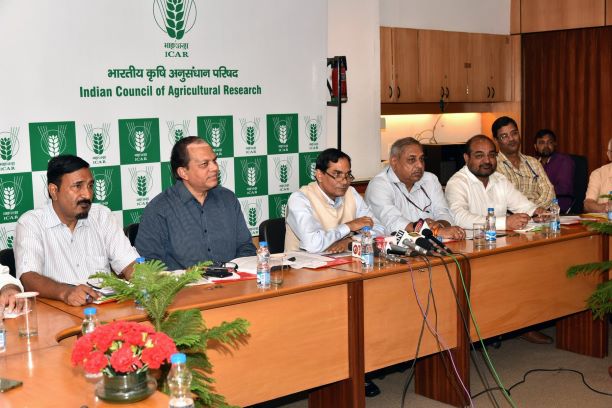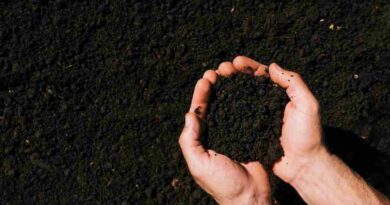North India Can Hope For Lower Pollution This Winter- ICAR
 Dr. Trilochan Mohapatra, Secretary (DARE) & DG (ICAR) addressed the press
Dr. Trilochan Mohapatra, Secretary (DARE) & DG (ICAR) addressed the press
According to a study by Indian Council of Agricultural Research (ICAR), paddy stubble burning has declined in western UP, Haryana and Punjab by 40-45 percent and majority of the drop was reported in Haryana, followed by UP with 25 percent and 15 percent in Punjab. That might be particularly good news for the national capital which has borne the unwelcome spotlight of being the world’s most polluted capital for some time now. Air Pollution in the winter months, particularly before the rabi or winter sowing season kicks in, has been one of the biggest issues for Delhi, for some time now.
The cutback in stubble burning has been attributed to the introduction of happy seeders, which is a zero tillage technology, that helps farmers earn more money and eliminate the need to burn the paddy residue.
Haryana may become India’s first state to end stubble burning
The officials at ICAR said that Haryana shows promise to fully eliminate the burning of crop residue given its successful adoption.
“This year Haryana is likely to be free from stubble burning. But Punjab and Uttar Pradesh will not be completely free. There has been vast improvement after our intervention,” said Trilochan Mohapatra, director general of ICAR, which has been working with farmers, state governments and public institutions at a press conference, that has been quoted in Economic Times.
As many as 4,500 villages in Haryana Punjab and western UP have been declared zero stubble burning villages in 2018. These villages cover an area of approx. 8 lakh hectares. While Haryana has shown readiness, the farmers in Punjab have remained sceptical due to high cost of the machine despite subsidies.
Under the central government scheme for promoting agricultural mechanisation for in-situ management of crop residue in North India between 2018-19 and 2019-20, an amount of ₹1,151.80 crore has been allocated. Within the first year of implementation, the Happy Seeder/zero tillage technology was adopted by over 4000 villages in the region.
Happy Seeder
This year ICAR is geared to distribute over 55,000 happy seeder machines before the harvest of Kharif crops that will begin in north India from October. Making the job easier is a central government subsidy. Interestingly, the drive to push the Happy Seeders had been impeded initially by reports of suppliers hiking prices, making the impact of subsidies redundant. We still don;t have data on how that was resolved eventually.
“Happy seeder is a profitable solution that could be scaled up for adoption among the 2.5 million farmers involved in the rice-wheat cropping cycle in north-west India. It can completely eliminate the need to burn residues,” Mohapatra said. It can also lower agriculture’s contribution to India’s greenhouse gas emissions, while adding to the goal of doubling farmers income, he added.
The happy seeder machine can be mounted on a tractor to sow wheat into the soil. While doing so, it simultaneously cuts and lifts the paddy straw which is then used as mulch. ICAR has estimated that when the crop residues burning will stop in entire area under the rice-wheat cropping system, it will generate additional benefits worth `900 crore for the farmers.
The Centre targets to spend ₹ 588 crore this year on subsidy for happy seeder machine, as against ₹ 565 crore in 2018. An individual farmers get 50% subsidy in buying a happy seeder (costs ₹ 1.5-1.75 lakh), while a group of farmers get 80% subsidy. Farmers who could not buy these machines can also rent them from Custom Hiring Centres (CHCs).
Air Pollution: Around 23 million tonnes of paddy residue is burnt in rice-wheat cropping system in Punjab, Haryana and western UP . High costs of manual labour to remove crop residues meant that farmers preferred to burn it on the field after paddy harvest to prepare for wheat sowing. A narrow window of 10-20 days between paddy harvesting and wheat sowing has also been cited as a reason behind residue burning.
The latest numbers from ICAR, and the better reception for machines like the Happy Seeder and others will hopefully lead to a better outcome this winter.




